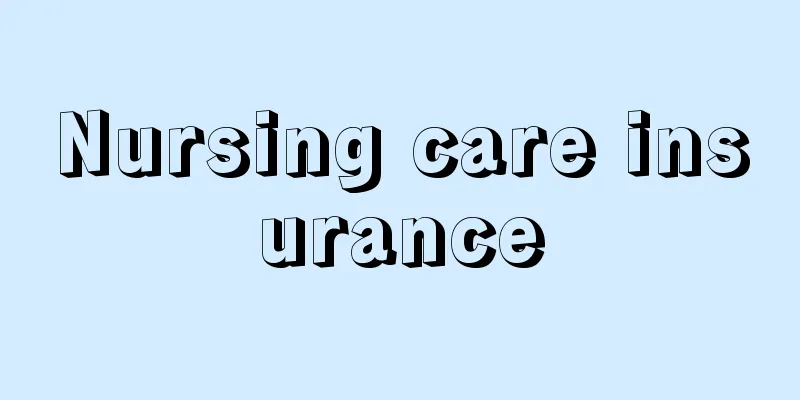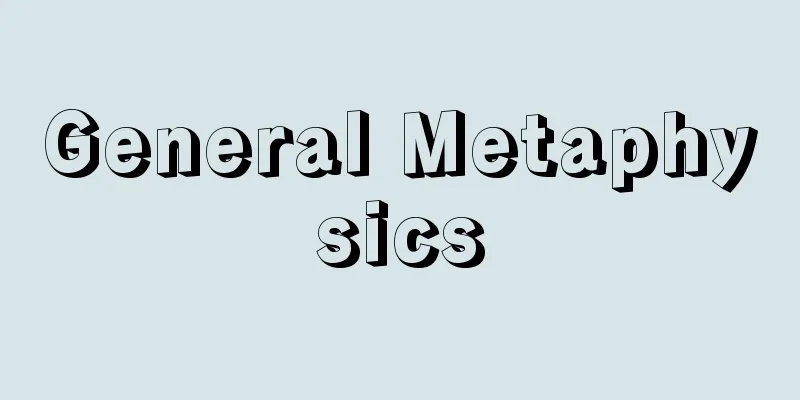Nursing care insurance

|
A new social insurance system that provides nursing care services to the elderly through the collection of insurance premiums. It was established in Germany in 1995, but in Japan, where the population is rapidly aging, the Nursing Care Insurance Act was enacted in December 1997 (implemented in April 2000) with the aim of compensating for the physical and economic burden on the insured and their family when they become dementia or bedridden. The insurer is the municipality (including special wards), and the insured are divided into two types. Type 1 insured persons are those aged 65 or older, and Type 2 insured persons are those aged 40 to 65. Both types receive benefits (home nursing care services and facility nursing care services) when they become in need of nursing care. Insurance premiums are deducted from pensions, etc. for Type 1, and added to medical insurance for Type 2 (half of the premium is paid by the employer in the case of employee insurance, and half is paid by the government in the case of national health insurance). The cost of nursing care benefits is paid by the insured person himself/herself, and the remaining half is paid by public funds (national 50%, prefectures and municipalities each 25%) and insurance premiums. The classification of the level of nursing care required (six levels, seven categories from 2006) is determined by the nursing care certification examination committee of the municipality. The number of people certified as requiring nursing care exceeded 4 million at the end of August 2004, which is about 1.8 times the number at the time the system was started. A legal amendment in 2005 introduced preventive nursing care services such as muscle training for people with a low level of nursing care required (from 2006), established comprehensive community support centers in each municipality as bases for these services, and, in principle, required residents of the facility to pay for their own food and accommodation costs, thereby reducing the amount of nursing care insurance benefits. A legal amendment in 2008 introduced new regulations on each business unit, such as the obligation to establish a business management system to ensure compliance with laws and regulations, and created the right to inspect the headquarters of business units of the national, prefectural and municipal governments. Furthermore, the 2012 legal reform revised the system and added provisions regarding (1) strengthening the cooperation between medical care and nursing care, (2) securing nursing care personnel and improving the quality of services, (3) improving housing for the elderly, (4) promoting dementia countermeasures, (5) promoting proactive efforts by insurers, and (5) mitigating increases in insurance premiums. Nursing care insurance offered by private insurance companies is considered to be additional insurance on top of this public insurance, but it is also called nursing care insurance. → Related topics Nursing care | Care manager | Social welfare | Social security | New insurance | Life support services | General insurance | Insurance | Nursing care beds | Elderly medical expenses | Elderly health care facilities | Elderly health care law Source : Heibonsha Encyclopedia About MyPedia Information |
|
保険料を徴収して高齢者に介護サービスを提供する新たな社会保険制度。ドイツでは1995年に創設されたが,急速に高齢化が進む日本でも被保険者が認知症(痴呆)や寝たきり状態に至った場合,本人や家族の肉体的・経済的負担を補う目的で1997年12月介護保険法が制定(実施は2000年4月)された。保険者は市町村(特別区を含む)で,被保険者は2種に区分される。第1号被保険者は65歳以上の者,第2号被保険者は40歳以上65歳未満の者とされ,いずれも要介護状態になると給付(居宅介護サービスと施設介護サービス)を受けられる。保険料は,第1号では年金等から差し引く形で,第2号では医療保険に上乗せして徴収する(被用者保険では半額が使用者負担,国民健康保険では半額を国が負担)。介護給付の費用は,自己負担1割,残りを公費(国50%,都道府県と市町村が各25%)と保険料で2分の1ずつ負担する。また要介護状態(6段階,2006年から7区分)の区分の認定は市町村の介護認定審査会が行う。要介護認定者は2004年8月末で400万人を突破し,制度開始時の約1.8倍となった。2005年の法改正で,要介護度の軽い人を対象にした筋力トレーニングなどの〈介護予防サービス〉が導入され(2006年度より),その拠点として各自治体に〈地域包括支援センター〉を新設,また施設入所者の食費・居住費を原則として自己負担とするなど,介護保険給付の抑制が図られた。2008年の法改正では,新たに事業者単位の規制として法令遵守義務の履行が確保されるよう業務管理体制の整備の義務づけや国,都道府県,市町村の事業者の本部への立入検査権を創設などの改正が行われた。さらに2012年の法改正では(1)医療と介護の連携の強化(2)介護人材の確保とサービスの質の向上(3)高齢者の住まいの整備等(4)認知症対策の推進(5)保険者による主体的な取組の推進(5)保険料の上昇の緩和,などに関する制度見直しや規定の追加がなされた。なお,民間の保険会社が発売する介護費用保険はこの公的保険の上乗せ保険と位置づけられるが,これを介護保険と呼ぶこともある。 →関連項目介護|ケアマネジャー|社会福祉|社会保障|新種保険|生活支援サービス業|損害保険|保険|療養型病床群|老人医療費|老人保健施設|老人保健法 出典 株式会社平凡社百科事典マイペディアについて 情報 |
<<: Exogamy - Gaikonsei (English spelling)
>>: Silkworm tachina fly - Silkworm tachina fly
Recommend
True's porpoise (English spelling) True's porpoise
…One of the body color variations of Dall's p...
Newspapers and magazines
A newspaper published in the early Meiji period. ...
Federal Reserve System
The Federal Reserve System is a unique central ba...
Hrubin, F.
…A Central European republic that existed from 19...
Tang Shao-yi (Tang Shao-i)
[Born] Xianfeng 10 (1860) [Died] August 1938, Shan...
Mother Goose's Melody
…In England, they are usually called “nursery rhy...
Black Thursday
On Thursday, October 24, 1929, stock prices on the...
Corneal ulcer
What is the disease? Unlike the corneal erosion m...
Chionographis
...A beautiful perennial plant of the lily family...
Pilot system - Unkoushiseido
…The staff of the deck, engine, and radio departm...
Thread removal - Itotori
1. The act of boiling the cocoons and harvesting r...
Japanese studies
A general term for research into Japan. Also calle...
Mortar - Mortar (English spelling)
A building material. A mixture of cement, sand, a...
Kakuda Prefecture - Kakuda
...Area = 7,284.63 km2 (16th in Japan)Population ...
《Cute Marka-chan》 - Cute Marka-chan
...At her mother's urging, she started taking...









